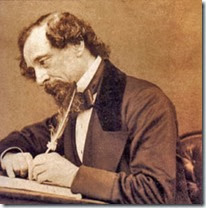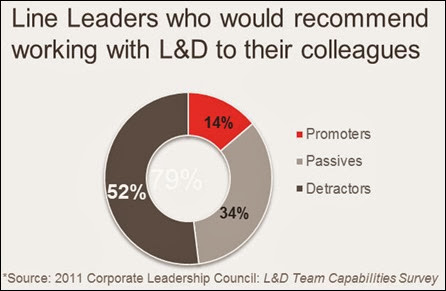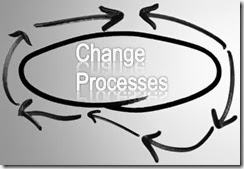 “It was the best of times, it was the worst of times, it was the age of wisdom, it was the age of foolishness, it was the epoch of belief, it was the epoch of incredulity, it was the season of light, it was the season of darkness, it was the spring of hope, it was the winter of despair, we had everything before us, we had nothing before us, we were all going direct to Heaven, we were all going direct the other way.”
“It was the best of times, it was the worst of times, it was the age of wisdom, it was the age of foolishness, it was the epoch of belief, it was the epoch of incredulity, it was the season of light, it was the season of darkness, it was the spring of hope, it was the winter of despair, we had everything before us, we had nothing before us, we were all going direct to Heaven, we were all going direct the other way.”
These are the words of Charles Dickens, 19th century English writer and social critic, writing in his epic novel set in England and France at the time leading up to the French Revolution.
At this time of the year in the run up to the major Christian festival and a period of family and friendship for all, another of Dickens’ stories, that of the transformation of the miserly old ‘bah humbug’ Ebenezer Scrooge from a ‘squeezing, wrenching, grasping, scraping, clutching, covetous old sinner’ to a generous man who treats others with compassion and love is also in many people’s minds.
I believe the L&D profession can take some lessons from both of these Charles Dickens stories, A Tale of Two Cities and A Christmas Carol.
It really is the best of times and the worst of times for learning professionals. There has never been a time of greater opportunity to make a real difference.
Equally, there has never been more danger for the profession.
There is a choice. Rethink what’s gone before and adapt to change, or keep on doing what’s always been done in the hope beyond hope that it will work.
The first of these choices has the potential to place L&D departments at the heart of the changes that are driving successful organisations. The second has the potential to consign them to the backwaters and, in the worst cases, to oblivion.
The Only Way is Up
The profession’s record has taken somewhat of a beating over the past few years. L&D departments have been accused of being followers rather than leaders; many have been accused of responding too slowly to make a difference; and of being focused on getting the process right at the expense of ensuring impact and value-add.
There’s some evidence to support many of these criticisms.
Two years ago the Corporate Leadership Council’s L&D Team Capabilities Survey reported some stark facts. The CLC surveyed 1,200 L&D executives and 350 line leaders in 51 countries across the world. Respondents represented a range of sectors and organisation types – financial services, oil and gas, healthcare, business services, industry, government and third sector were all included. The findings make salutary reading for any CLO, learning leader or L&D professional.
Briefly, the CLC survey found the following:
L&D IS SEEN AS IMPORTANT BY MOST MANAGERS Employee development (and learning) is seen as important by most line managers. 86% of line leaders identified this as critical to achieving their organisational outcomes.
ON THE SURFACE THERE IS GENERAL SATISFACTION WITH EXISTING LEARNING INTERVENTIONS
The vast majority of people attending learning events or learning interventions (classroom training, eLearning modules, virtual sessions) reported that they were satisfied with the event or intervention (in the survey 84% declared they were satisfied or very satisfied). Equally, their managers reported that they, too, were happy with individual learning events or interventions (79% were either satisfied or very satisfied).
The vast majority of people attending learning events or learning interventions (classroom training, eLearning modules, virtual sessions) reported that they were satisfied with the event or intervention (in the survey 84% declared they were satisfied or very satisfied). Equally, their managers reported that they, too, were happy with individual learning events or interventions (79% were either satisfied or very satisfied).
This is all very positive, and an apparent validation of the existing work L&D departments are carrying out.
But the rest of the survey results tell a very different story.
When asked about the overall performance of the L&D department, rather than single learning events or interventions, the survey data revealed the following:
L&D’S OVERALL PERFORMANCE AND IMPACT IS EXTREMELY POOR
-
77% of executives and managers rated their L&D department’s overall performance as poor or very poor.
-
76% felt that L&D was ineffective or extremely ineffective at supporting their business outcomes.
-
85% reported that their L&D departments were ineffective or extremely ineffective at supporting organisational talent strategy.
Saving the worst to last, the CLC survey reported that when asked ‘would you recommend working with your L&D department to your colleagues’ only 14% responded positively and 52% were ‘net detractors’.
In other words the majority of line leaders would actively discourage their colleagues from working with the L&D department.
Always-On and Hyper-Connected
 Of course there are many L&D departments that are responding well to the dramatic changes that are occurring in the way that work is accomplished and all the changing expectations that come with that.
Of course there are many L&D departments that are responding well to the dramatic changes that are occurring in the way that work is accomplished and all the changing expectations that come with that.
Many, however, are either struggling or not coping at all.
Senior executives and organisation leaders are adapting and developing working practices in their businesses and departments – whether they are for-profit, government agencies or third sector – to operate in totally different ways from a just few years ago.
The way organisations work today is almost unrecognisably different from the structured and closely-managed systems in pre-Internet and pre-ubiquitous connectivity times. The expectation now is that many workers, particularly the expanding number carrying out knowledge work, as well as people managers and executives in all enterprises, are always-on and hyper-connected. They, themselves, expect immediacy and real-time responses. Innovation is their driver and change is accepted as the norm. Work is customised rather than standardised as leaders strive for their people to respond to the changing, and often increasing, demands of their clients and customers.
All-in-all the implication for L&D professionals has been to make their traditional offerings of carefully designed, time-consuming and often slowly developed structured modules, courses and programmes relevant to fewer and fewer stakeholder needs.
New Look L&D
It is becoming increasingly clear that L&D departments need to adopt new ways of working and new approaches to learning if they are to position themselves to lead rather than follow. This will only happen if they embrace and develop an entire new range of professional capabilities. Expertise in instructional design and programme development and delivery is not going to be enough. Stick with a one-eyed focus on designing and managing ‘learning’ and irrelevance and oblivion will surely follow.
Certainly ID and engaging programme design will continue to serve a purpose, but it won’t suffice. There are far more opportunities that need to be taken in the workplace and many more roles that the L&D department will need to play.
Change processes while developing capability
Managers in virtually every part of every organisation are being asked to do more with less. Deliver more value with fewer resources. L&D departments are not exempt.
This means reviewing systems and processes and removing ‘busy work’. It also means reducing spend by using open source technology, exploiting tools that are already being used in other parts of the organisation, and looking for new, faster and better ways to deliver value.
For CLOs there are significant decisions to be made around approaches and processes, such as:
-
Why purchase a new social learning platform when we can use an existing social media tool from the Marketing or Communications department that may be in use more widely by others in the organisation?
-
Why continue running low value and expensive task-focused on-boarding training for our screen-based workers when we can cut the cost and time by implementing an effective performance support solution that will save money in even the first year?
-
Why continue to deliver classroom-based compliance training when we can replace it with less time-consuming eLearning that does the job just as well or even better at a fraction of the real cost?
-
Why continue carrying out annual training needs analysis trying to predict development requirements 12 months ahead when we and our key stakeholders know that things will change rapidly and the capabilities they need may well change on a monthly or quarterly basis as new projects come on-stream and others are mothballed?
-
Why devote resources to develop role-specific learning pathways predominantly based on courses and structured programmes when we know the time and resource taken to design, develop and deliver the content means we’re never likely provide timely solutions to immediate challenges? Added to which we know that keeping the content for structured learning up-to-date will require resources we don’t have and are not likely to get in the future.
New L&D capabilities
All of the above are important. Equally important for HR directors, CLOs and individual learning professionals is the need to embrace the changing landscape and develop their own and their teams’ capability to be in a position to better deliver real value in this new world of work.
What’s needed in terms of capability then?
One answer is that it’s easier to think about the role learning professionals need to play in this new environment if we apply a ‘70:20:10 lens’ and ask the following questions:
-
What capabilities are needed to support structured learning?
This is the notional ‘10’ on the 70:20:10 framework -
What capabilities are needed to support social learning?
This is the notional ‘20’ in the 70:20:10 framework -
What capabilities are needed to support workplace learning?
this is the notional ‘70’ in the 70:20:10 framework
Some of the capabilities are listed below. This is by no means a definitive list, but it contains what I have found to be critical ones.
PERFORMANCE CONSULTING
Performance consulting capabilities are required to support all three areas. Not only capabilities, but also a solid and consistent performance consulting approach. Separating stakeholder needs from wants and identifying the root causes of underperformance is a skill that many learning professionals simply do not possess. Performance consulting is all about identifying the most appropriate solution. Often this has nothing to do with building knowledge or skills and it’s important to reach a view on that quickly.
Performance consulting capabilities are required to support all three areas. Not only capabilities, but also a solid and consistent performance consulting approach. Separating stakeholder needs from wants and identifying the root causes of underperformance is a skill that many learning professionals simply do not possess. Performance consulting is all about identifying the most appropriate solution. Often this has nothing to do with building knowledge or skills and it’s important to reach a view on that quickly.
CONTENT CAPABILITIES
In some cases content will be created by the L&D team. Sometimes it will be curated by them. Sometimes they will need to support domain experts to create and curate content. Sometimes learning professionals will need to make judgements whether content is required at all. Each of these requires skill and experience, not just to create content, but decide the nature, form, and origin.
In some cases content will be created by the L&D team. Sometimes it will be curated by them. Sometimes they will need to support domain experts to create and curate content. Sometimes learning professionals will need to make judgements whether content is required at all. Each of these requires skill and experience, not just to create content, but decide the nature, form, and origin.
SOCIAL MEDIA CAPABILITIES
A good starting point for social media capability requirements is presented by Roland Deiser and Sylvain Newton in their Feb 2013 McKinsey Quarterly article. Although Deiser and Newton were addressing social media literacy for senior leaders, their advice is highly relevant for all learning professionals, whether at CLO level or learning practitioner.
A good starting point for social media capability requirements is presented by Roland Deiser and Sylvain Newton in their Feb 2013 McKinsey Quarterly article. Although Deiser and Newton were addressing social media literacy for senior leaders, their advice is highly relevant for all learning professionals, whether at CLO level or learning practitioner.
Deiser and Newton identify the following capabilities:
-
As social media producer: creating compelling content
-
As social media distributor: leveraging dissemination dynamics
-
As social media recipient: managing communication overflow
-
As social media advisor and orchestrator: driving strategic social media utilisation
-
As social media architect: creating an enabling organisational infrastructure
-
As social media analyst: staying ahead of the curve
There are certainly other capabilities required around social media and as Jane Hart, an expert in this field, has said repeatedly ‘you can’t teach social media. You need to do it and learn from it’. In other words, everyone involved in organisational learning – from HRDs and CLOs to junior practitioners – needs to immerse themselves in some work-focused social media activities as part of their own development.
WORKPLACE LEARNING CAPABILITIES
Workplace learning occurs in many forms. The key capabilities needed by learning professionals to support learning in the workflow, apart from the ability to build strong and positive relationships with leaders and business managers, are the same as any 21st century worker needs to exploit and support their own workplace development:
Workplace learning occurs in many forms. The key capabilities needed by learning professionals to support learning in the workflow, apart from the ability to build strong and positive relationships with leaders and business managers, are the same as any 21st century worker needs to exploit and support their own workplace development:
-
Search and ‘find’ capabilities, together with sense-making: the ability to find the right information when needed and make sense of it
-
Critical thinking: the ability to extract meaning and significance from a situation and share that with others
-
Creative thinking: the ability to generate new ideas about, and ways of, using, information gathered by observation, experience and from others
-
Analytical capability: the ability to visualise, articulate and solve complex problems and make decisions that make sense based on the available information
-
Networking acumen: the ability to identify and build relationships with others who are potential sources of knowledge and expertise, both within and outside the organisation
-
Relationship-building capability: the ability to build trust and productive relationships that are mutually beneficial
-
Application of Logic: the ability to apply reason and argument to extract meaning and significance
-
Research capability: the ability to analyse and validate data and information and the underlying assumptions on which it is based
A Development Mindset
| mindset n. /ˈmʌɪn(d)sɛt/ A fixed mental attitude or disposition that predetermines a person’s responses to and interpretations of situations. An inclination or a habit. |
Apart from this long list above, HRDs and CLOs need to engender a culture and development mindset within their learning teams that is focused on outputs – on supporting learning wherever and whenever it occurs.
Without the right attitude and mindset, L&D departments and learning professionals will sink without trace.
Such a mindset needs to become embedded in ‘the way we do stuff around here’. It needs to become fixed and focused on supporting the development of others and at the same time developing oneself.
Harold Jarche explains it well. Harold talks about ‘connect, exchange, contribute’ as key attitudes for learning professionals:
“..acceptance of a world in flux and that knowledge is neither constant nor fixed. Instead of trying to know everything in our field, we can concentrate on knowing who to connect with. The network becomes all-important. That means an attitude of openness and collaboration – joining others on a journey of understanding. Giving up control would be a first step on this journey.”
A final lesson from Dickens
L&D today is in the same situation Dickens described in A Tale of Two Cities in 1859:
“We have everything before us, we have nothing before us”
L&D departments and professionals can face the future in the way Ebenezer Scrooge started out – ‘squeezing, wrenching, grasping, scraping, clutching’ at practices and attitudes of the past. Or learning leaders and their teams can change as Scrooge changed once the Ghosts of Christmas Past, Present and of Christmas Yet to Come led him through London and he realised he had the free will to embrace the opportunities and joy that he’d previously seen only as ‘humbug’.


 ConsultMember of the Internet Time Alliance and Co-founder of the 70:20:10 Institute, Charles Jennings is a leading thinker and practitioner in learning, development and performance.
ConsultMember of the Internet Time Alliance and Co-founder of the 70:20:10 Institute, Charles Jennings is a leading thinker and practitioner in learning, development and performance.